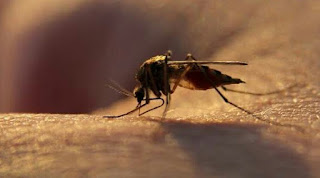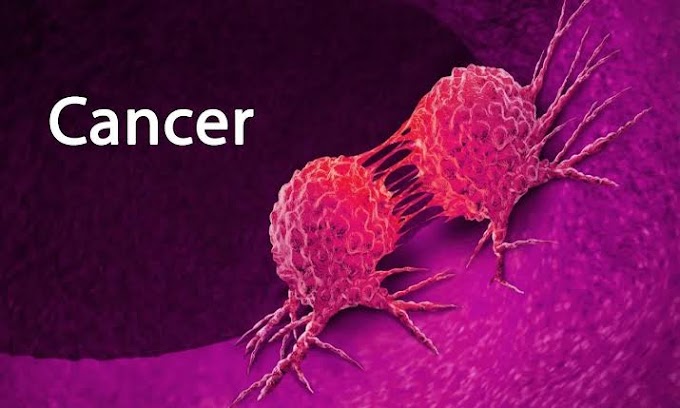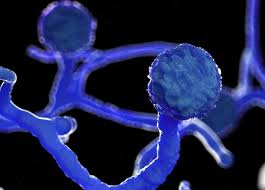What is malaria?
Malaria is a mosquito -borne irresistible illness that influences people and other animals. Malaria causes indications that normally incorporate fever, tiredness, vomiting, and headaches. In serious cases, it can cause yellow skin, seizures, trance state, or death. Symptoms generally start ten to fifteen days subsequent to being nibbled by a contaminated mosquito. If not appropriately treated, individuals may have repeats of the sickness months later. In the individuals who have as of late endure a disease, reinfection ordinarily causes milder side effects.
Malaria is brought about by single-celled microorganisms of the Plasmodium group. The sickness is most generally spread by a tainted female Anopheles mosquito. The mosquito nibble presents the parasites from the mosquito's salivation into an individual's blood. The parasites travel to the liver where they develop and reproduce.
 |
| Female Anopheles Mosquito |
Types of Malaria
The following four differing types of human protozoal infection are recognized on the idea of the amount of return of fever.
1. Tertian, benign tertian or vivax protozoal infection.
The feticide agent of this sort of protozoal infection is P. vivax. It is characterised by the return of fever after each third day, i.e., once forty eight hours. this sort of protozoal infection doesn't end in death of the patient. The incidence of the frailty is worldwide, in the main in temperate regions.
2. Quartan Malaria
P. malariae is the causative organism of Quarton malar that is characterised by the return of fever each fourth day, i.e., at intervals of seventy two hours. it's renowned for its longevity, forty years or a lot of in untreated persons. tho' it commonly doesn't prove fatal to the patient, the chronic infections typically produce to fatal excretory organ conditions. The unwellness prevalence, however it is mainly confined to tropical and climatic zone regions.
3. Ovale or mild tertian protozoal infection.
this kind of protozoal infection resembles a great deal to the tertian protozoal infection and is caused by P. ovale. The fever recurs each third day or at intervals of forty eight hours. Ovale protozoal infection isn't greatly harmful and is principally confined to tropical continent.
4. Aestivo-autumnal, malignant tertian or pernicious protozoal infection.
The causative organism of this protozoal infection is P. falciparum. during this conjointly the fever cycle is of forty eight hours. The fever is commonly fatal to the patient because it affects the brain. Its incidence follows that of P. vivax.
5. Routine protozoal infection.
When more than one species of Plasmodium infect the patient, or once a pair of or three generations of parasites mature on sequent days, the fever is recurrent daily with Associate in Nursing interval of twenty four hours.
Symptoms of malaria
Symptoms for malaria start around 10-15 days after the contaminated mosquito nibble. Alongside high fever, shaking chills, and perspiring, they can include:
Hurling or feeling like you're going to
Cerebral pain
Diarrhea
Being extremely worn out (exhaustion)
Body pain
Yellow skin (jaundice)
Kidney disappointment
Seizure
Disarray (state of confusion)
Grisly stools
Here are a few things to remember:
Since the signs are so like cold or influenza indications, it may be difficult to determine what you have from the start.
Malaria indications don't generally appear inside about fourteen days, particularly if it's a P. vivax disease.
What are the causes of malaria?
Malaria is brought about by the Plasmodium parasite. The parasite can be spread to people through the chomps of tainted mosquitoes.
There are a wide range of kinds of plasmodium parasite, yet just 5 sorts cause jungle fever in people.
Duration of infection
If the patient is not given any treatment and if death does not result rapidly, after a variable number of erythrocytic schizogonic cycles, the host's antibodies will destroy all or most of the erythrocytic schizonts.
This will result in the disappearance of the malarial symptoms and occurrence of latency.
However, the prarasite persists either in the liver cells (P. vivax, P. ovale, P. malariae), or in the capillaries of various viscera (P. falciparum). In case of vivax malaria, the infection persists for atleast two years, in quartan malaria for five years and in malignant malaria for six months.
Control of malaria
In India, prevention and control of malaria is treated as a national problem and the anti-malaria department of the government deals with it. The war waged on malarial parasite is fought by attacking it simultaneously on three major fronts. In other words, all the control measures fall under the following three categories :
(1) Elimination or destruction of vector, i.e. Anopheles mosquito.
(2) Prophylaxis i.e. prevention of infection.
(3) Treatment of the infected patient.
[I] Destruction of Anopheles
If Anopheles mosquitoes are completely destroyed, the infection from one person to another can be checked. It is the most effective and the surest way of controlling malaria. It is achieved by using effective insecticides and by draining swamps to destroy the breeding places of mosquitoes. Adult mosquitoes can be most effectively combated 110 dwellings. The subsequent ways will utilized into kill them:
(a) Killing by hands.
The mosquitoes that approach or bite could also be killed by hands to avoid wasting oneself moreover as others.
(b) Traps
These area unit are the little boxes fabricated from wire gauze and internally lined by black paper or artifact. The mosquitoes tend to enter the boxes then is killed by closing them.
(c) coating
Mosquitoes is driven out of the homes or killed by coating. Sulphur, pyrethrum, cresol, naphthalene or different derivatives of dissolver area unit burnt to provide toxic fumes. Smoke of garlic is currently thought-about to be effective in driving the mosquitoes out.
(d) Spraying
Mosquitoes is killed within human dwellings by victimisation mosquito-bombs or by spraying insecticide, flit, pyrethrum and different pesticides.
(e) Sterilization
Sterilization of mosquitoes is currently being achieved in some elements of the globe, significantly Japan. This technique is incredibly effective in dominant dipterous insect population.
2. Elimination of breeding places.
Wet areas, marshes and stagnant waters, like pools, ponds, pits and ditches should be drained off as they're breeding places of mosquitoes. If doable, the breeding grounds could also be crammed up with earth or stones, etc. Domestic species is for the most part controlled by eliminating receptacles that hold out, such tin- cans, buckets, cisterns, barrels, etc. Bushes and shrubs ought to be cleared off. Open drains ought to be closed underground.
3. Destruction of larvae and pupae of mosquitoes.
It is easier and a lot of convenient to kill the aquatic larvae and pupae than the winged adults of mosquitoes.
(a) proper drainage
The young stages of mosquitoes is prevented from flourishing by not permitting water to square in drains, streams, ditches, etc. A speedy flow of water is maintained, so the developing forms escape into larger streams and rivers, wherever they typically die.
(b) Oil screens.
Surface of water could also be lined by spreading fossil fuel, coal oil, rock oil or fuel oil. The thin surface oil film prevents the larvae and pupae from carrying their normal respiration and they die.
When to consult with Doctor ?
Given how rapidly intestinal disease can become dangerous, it is important to have clinical consideration as soon as possible. Young children, infants, and pregnant women have a particularly high risk of severe cases of malaria infection.
If you live in or get a high fever while visiting a place where intestinal disease is more likely, be careful. You should get clinical help in any case, even if you see signs several weeks, months, or even a year after your movement.
Treatment of malaria
The treatment of malarial infection depdends on the severity of the disease. Uncomplicated protozoal infection is treated with oral medications.
Tretment of P. vivax cases.
Chloroquine remains the treatment of selection for vivax malarial infection. Vivax protozoal infection relapses because of the presence of hypnozoites within the liver. The relapse rate in vivax protozoal infection in Asian country is around half-hour. For its prevention, Primaquine might be given under medical supervision.
Treatment of P. falciparum cases.
several areas in Asian country have developed resistance to Chloroquine. In step with United Nations agency tips 2010, artemisinin- based combination therapies (ACTs) square measure counseled as anti-malarial treatments for uncomplicated malarial infection caused by P. falciparum.
What's ACT?
ACT consists of associate degree artemisinin derivative combined with an extended acting antimalarial drug or sulfadoxine-pyrimethamine.
The ACT employed in the national programme in Asian country is artesunate + sulfadoxine-pyrimethamine (SP). Presently, Artemether + Lumefantrine mounted dose combination and blister pack artesunate + mefloquine antimalarial drug are out there within the country.
Treatment of severe Malaria
In severe falciparum protozoal infection, it's counseled that speedy clinical assessment and confirmation of the diagnosis is formed (by OPtiMAL) followed by administration of intravenous or intramuscular. Artesunate Injection for minimum of twenty four hours. Quinine is a suitable if artesunate injection isn't out there.
Complexities
Intestinal sickness can be deadly, especially when brought about by the plasmodium species normally in Africa. The World Health Organization gauges that about 94% of all intestinal sickness passings happen in Africa — most regularly in kids younger than 5.
Intestinal sickness passings are generally identified with at least one genuine complications, including:
Cerebral intestinal sickness.
If the parasite-laden platelets block the small nerves in your brain (cerebral jungle fever), damage to your cerebrum or enlargement of the cerebrum can occur. Cerebral intestinal disease can cause seizures and fainting.
Breathing issues.
Collected liquid in your lungs (aspiratory edema) can make it hard to relax.
Organ disappointment.
Malaria fever can harm the kidneys or liver or cause the spleen to crack. Any of these conditions can be dangerous.
Iron deficiency.
Jungle fever may result in not having sufficient red platelets for a satisfactory stockpile of oxygen to your body's tissues (paleness).
Low glucose.
Extreme types of intestinal sickness can cause low glucose (hypoglycemia), as can quinine — a typical prescription used to battle malarial infection. Exceptionally low glucose can bring about unconsciousness or demise.
Prevention to take
1. Mosquitoes can be prevented from biting by adopting various protective measures, like
- Building houses on high grounds.
- Screening of doors, windows and ventilator
- Use of mosquito nets.
- Use of anti-mosquito creams (repellents) o exposed parts of the body.
2. Certain anti malaria drugs, such as Quinine, Paludrine Daraprim, Proguanil and Pyrimethamine, taken in small daily or weekly doses, are effective in keeping off malaria. They kill sporozoite before they become estabilished in liver.
3. Chances of infection can be greatly minimized maintaining proper health. It can be achieved getting proper nourishment, by avoiding expo to bad conditions and by following
Anti malaria campaign in India
About two decades ago malaria was the most widespread disease in India. With the assistance of World Health Organization (WHO), the Ministry of Health of the Government of India launched a National Malaria Control Programme in 1962 and almost controlled it by destroying the mosquitoes with D.D.T. and other insecticides.
For the last few years the mosquitoes have appeared again in plenty and the malaria infection has begun. The D.D.T. seems to have become ineffective as mosquitoes have developed immunity for it. Also a change in the behaviour of the mosquitoes has been noted.
They now bite and rest outdoors I instead of biting humans indoors and resting on the walls. The Vector Control Research Center, Pondicherry, of the Indian Medical Research Board is now busy in finding out the alternative means for the eradication of mosquitoes. It has discovered a species of water- bug (fam. Notonectidae) which feeds on the eggs and larvae of mosquito. The + National Institute of Communicable Diseases, Delhi, and the Postgraduate Medical Institute, Chandigarh, are busy in developing the vaccines for malaria.
Two such vaccines are being testified d With new strategies adopted by Government of India such as increased financial allocation to the anti- malarial operations and the treatment of every fever case with drugs readily made available, there has been decline in the incidence of malaria e.) recently.
Find out :-
Top 3 vaccine for COVID-19 in India







